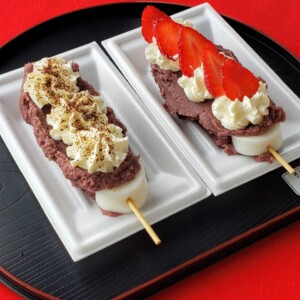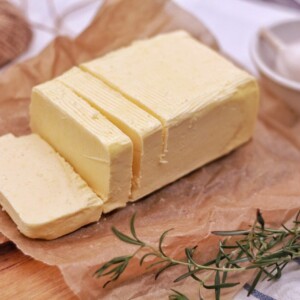
What kind of food is "Bakke"? We also introduce the origin of the name and cooking methods! [Miyagi Prefecture]
table of contents
"bakke" means. In fact, "bakke" is the name of a certain food ingredient. In this article, we will introduce the origin of the name and delicious ways to eat "bakke," a food ingredient beloved in Miyagi Prefecture.
What kind of food is bakke?

"Bakke" is a Miyagi dialect word for butterbur . Bakke is one of the typical spring wild vegetables, and is picked and eaten when it is young and soft before the flowers bloom. It grows in large numbers along the mountains in the prefecture, and you can often find bakke and processed products for sale at farm shops such as roadside stations.
It has a slightly bitter taste and is recommended to be enjoyed with sake or as a side dish with rice. In Miyagi Prefecture, it is particularly famous to eat it mixed with miso as "bakemiso."
What is the origin of Bakke?
There are several theories about the origin of the name Bakke. One popular theory is that the name "Bakke" comes from "ghost" (obake) because of the way Bakke sprout from the ground, bud, and then bloom into flowers, and another is that "Bakke" comes from "Bakya," which means spring in the Ainu language.
is also a dialect used in Aomori and Akita prefectures
How to eat Bakke deliciously? Recommended cooking methods

Bakke is an addictive ingredient with a unique bitter taste. From here on, we will introduce how to prepare bakke and some recipes
How to prepare and store bakke
Bakke has a slightly bitter taste when left raw, so the key to enjoying it is to carefully remove the bitterness. After cutting off the base and removing the brown outer leaves, boil it in plenty of salted water. After boiling, put it in water to cool, and then drain with kitchen paper to achieve just the right bitterness
Bakke changes color quickly, so use it immediately if you are cooking with it. If you want to store it, drain it, put it in a ziplock bag, and freeze it. It will stay fresh for about a year.
Bakke Miso

The bitter taste of bakke and the richness of miso are an exquisite match, and it is recommended as a side dish for rice, a filling for onigiri, or as an accent for chilled tofu
material
- 5 large bakke (prepared)
- 80g miso
- 2 tablespoons mirin
- 1 tablespoon sugar
- 1 tablespoon salad oil
How to make
- Coarsely chop the prepared bage and fry briefly in oil
- Once the oil has been absorbed, add the seasonings and mix over low heat
- Once everything is together, it's done
- Once cooled, store in a jar
Bakke Tempura

material
- Bakke 100g
- Tempura flour 50g
- 1 egg
- 40ml water
- Tempura oil (appropriate amount)
How to make
- Sprinkle a small amount of tempura flour onto the bakke
- Mix tempura flour, eggs and water in a bowl and leave for 10 minutes
- Dip the bakke in step 2 and fry in oil at 180°C
- When the dough in the oil starts to feel light, it's done
Experience the taste of spring, "Bakke"
This time, we have introduced the origin and delicious cooking methods of "bakke," a dialect word for butterbur. It has an adult taste, and once you try it, you will be hooked. If you are interested, please give bakke a try
Link: Ministry of Agriculture, Forestry and Fisheries <Our Local Cuisine> – Bakke Miso


![Scary and slightly sad stories... "Michinoku Otogi Kaido" with many stories left behind [Shichigasyu-cho, Shiraishi City, Miyagi Prefecture] Fairytale images](https://jp.neft.asia/wp-content/uploads/2023/04/be73b392233d2fe609797e999f8ca547-1-150x150.jpg)

![Date Masamune's brand rice has debuted with its chewy texture! [Miyagi Prefecture] freshly cooked rice](https://jp.neft.asia/wp-content/uploads/2018/01/aIMG_7587-150x150.jpg)
![[Shiogama City, Miyagi Prefecture] “Shiogama Seafood Intermediate Wholesaler Market” has the best tuna catch in Japan! My seafood bowl is all you want Bowl of rice topped with sashimi](https://jp.neft.asia/wp-content/uploads/2018/03/5c22812f9b5529f3db877cdd36c2ccc2_s-150x150.jpg)
![[Morioka City, Iwate Prefecture] What is Akabu? Introducing new sake made by young people in Iwate Akabu Sake Brewery](https://jp.neft.asia/wp-content/uploads/2022/02/IMG_8760-150x150.jpg)
![What is traditional vegetable mackerel? Introducing the origin and delicious ways to eat it [Yonezawa City, Yamagata Prefecture] 2422826_mco](https://jp.neft.asia/wp-content/uploads/2022/03/2422826_mco-150x150.jpg)
![A detailed introduction to the relationship with "Toyobai" and "Hohai Bushi" which are regulars at competitions! [Aomori Prefecture] Miura Sake Brewery](https://jp.neft.asia/wp-content/uploads/2022/11/795316b92fc766b0181f6fef074f03fa-6-150x150.jpg)
![[Hirosaki City, Aomori Prefecture] Starbucks Coffee Hirosaki Koen-mae store has a Taisho romance feel. “Sakura light-up” spreads out in front of you on winter nights 2 Starbucks Hirosaki Koenmae Store and Sakura Light Up 2](https://jp.neft.asia/wp-content/uploads/2023/02/34d68444995e05888ffd2d2b8487857b-150x150.jpg)











